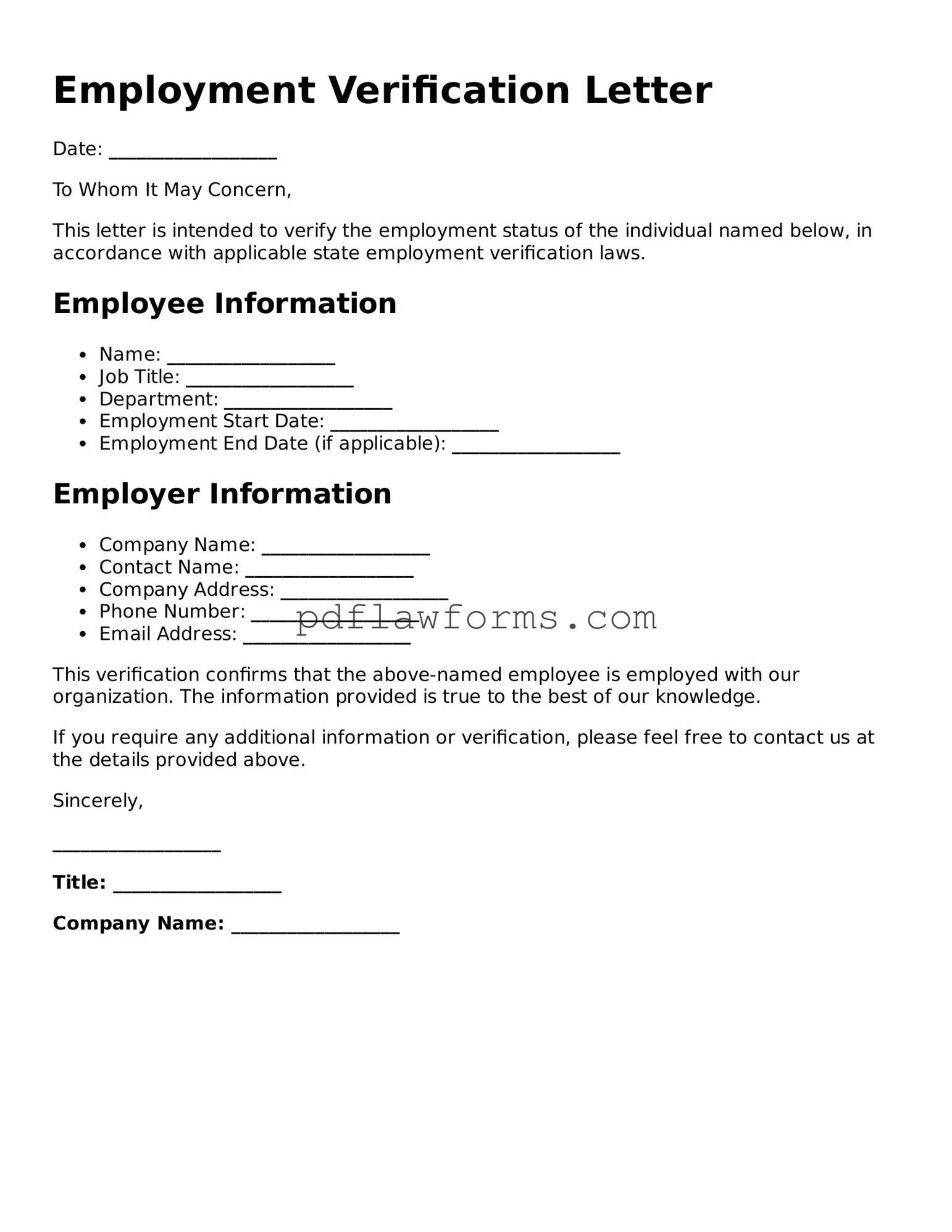Filling out an Employment Verification form can seem straightforward, but many individuals make common mistakes that can lead to delays or complications in the verification process. One significant error is providing inaccurate or incomplete information about employment dates. When applicants fail to include the exact start and end dates of their employment, it creates confusion for the verifier. This can lead to unnecessary follow-up questions and may even jeopardize the applicant's credibility.
Another frequent mistake involves listing incorrect job titles. Job titles can vary significantly between companies, and using an outdated or incorrect title can misrepresent the applicant’s role and responsibilities. This misrepresentation may raise red flags for potential employers, who may question the applicant’s honesty or attention to detail.
Some individuals neglect to include the name and contact information of their previous employer. This omission can stall the verification process, as the verifier may not be able to reach the necessary contacts to confirm employment. Providing accurate contact information is essential for a smooth verification process.
Additionally, failing to obtain consent from previous employers before submitting the form is a critical oversight. Many employers require permission to release employment information, and not securing this consent can lead to refusal from the previous employer, causing delays in the verification process.
Another common error is misunderstanding the purpose of the Employment Verification form. Some applicants may provide excessive personal information that is not relevant to the verification process. It is important to focus on employment-related details rather than personal anecdotes or unrelated qualifications.
Inconsistent information across different documents is also a significant issue. If the information on the Employment Verification form does not match what is provided on a resume or job application, it can create doubts about the applicant's integrity. Consistency is key in presenting oneself to potential employers.
Moreover, applicants sometimes fail to proofread their forms before submission. Simple typographical errors or misspellings can undermine the professionalism of the application. Taking the time to review the form can prevent these easily avoidable mistakes.
Another mistake is not following the specific instructions provided by the requesting party. Each employer may have different requirements regarding how the form should be completed. Ignoring these instructions can lead to further complications and delays in the verification process.
Lastly, some individuals underestimate the importance of timeliness. Delaying the submission of the Employment Verification form can hinder the hiring process. It is crucial to complete and submit the form promptly to avoid losing out on potential job opportunities.
